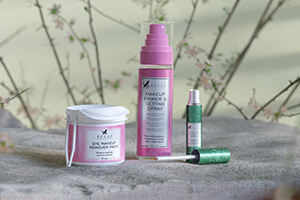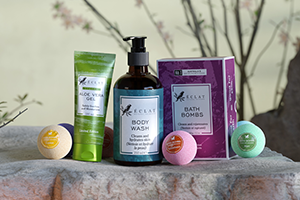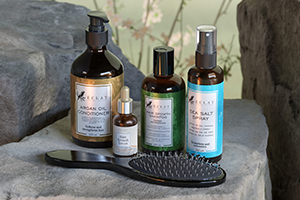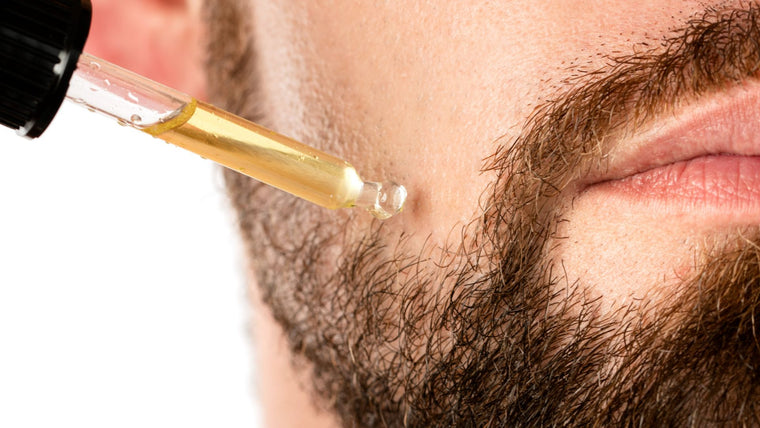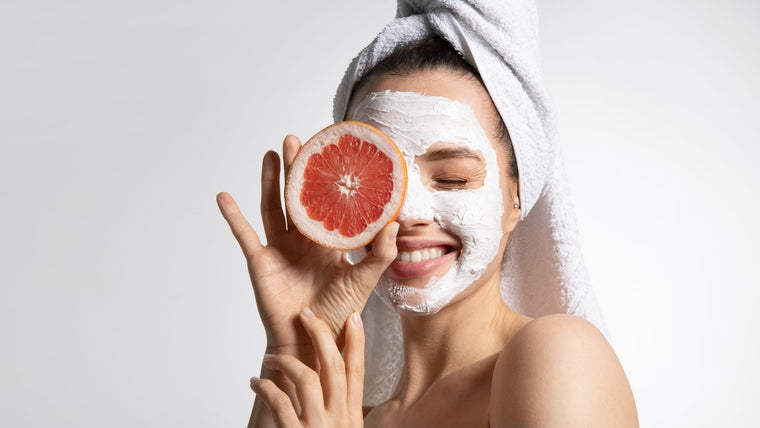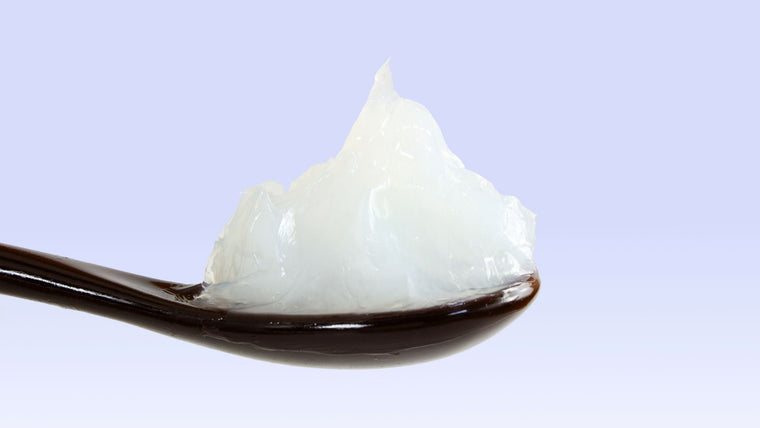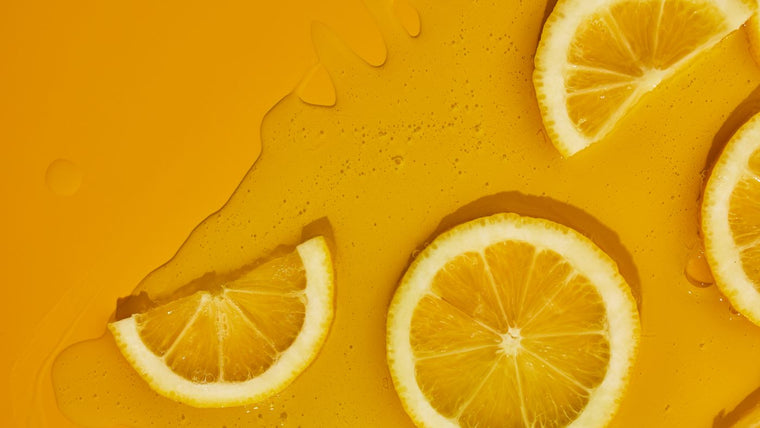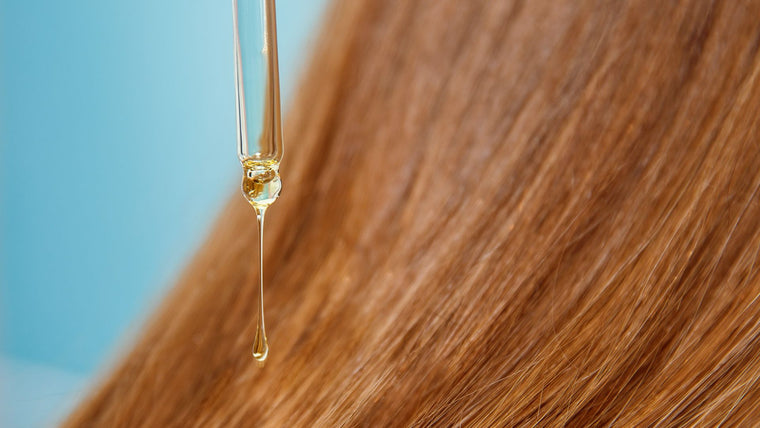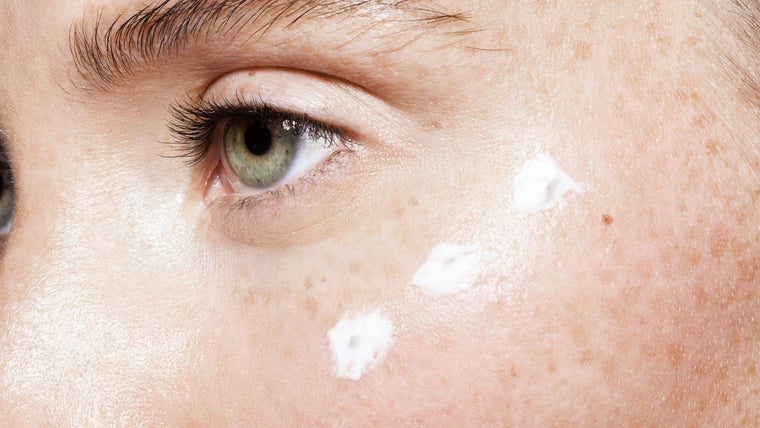Unpacking the Benefits of Tea Tree Oil for Skin
- 07/08/2023

If your skin is acne-prone or congested, oily, and generally stressed-out on the reg, it's time to acquaint yourself with tea tree oil. This purifying, clarifying essential oil might just be about to trump all your favorite blemish-fighting skincare products—and we're here to explain why.
Before we dive into the benefits of tea tree oil, let's take a look at the origins of this anti-inflammatory ingredient, whose history in treating acne, oily skin, and infections (plus a bunch of other things, which we'll get to later) goes back centuries.
What is tea tree oil, and where does it come from?
As you may have sussed out, tea tree oil is sourced from the leaves of melaleuca alternifolia, a.k.a. tea tree, native to the Australian states of Queensland and New South Wales. First used as a traditional remedy by Aboriginal Australians centuries ago, then made widely commercially available in the 1920s, tea tree from melaleuca alternifolia is now a popular antibacterial treatment and skincare favorite around the world.

If you're looking for a more natural (and refreshingly scented) alternative to popular, often-harsher acne fighters like benzoyl peroxide and salicylic acid, tea tree oil is a solid option to consider.
What does tea tree oil treat?
As a natural antimicrobial agent, tea tree oil is able to stop bacteria and infections in their tracks, halting their ability to spread.
The health benefits of using tea tree oil
The natural-beauty community has long raved about tea tree oils as solutions to various issues, from skin conditions like acne to fungal issues like dandruff and toenail fungus.
Dig a little deeper into this multi-talented treatment and you'll find that it's also often used for the likes of lice and bad breath. Some people swear by it as a synthetic-free solution to deodorant or mouthwash; others prefer to use drops of tea tree around their homes as all-purpose cleaners or insect repellents.
We could go on but, for the sake of brevity, let's dive right into the most research-backed benefits of tea tree oil.
Using tea tree oil to reduce acne
If you're in the oily-skin camp, you might have stumbled across this article while scouring the internet in the hope of learning more about how this essential oil clear up your complexion and soothe skin irritation.

When it comes to treating acne, products containing tea tree oil excel in different ways. First things first, tea tree oil's anti inflammatory properties make it great for calming stressed-out, oily skin by restoring balance and flattening any angry, under-the-skin spots. Used topically, tea tree oil may also help with more specific skin conditions, like fungal acne and dermatitis.
The antibacterial properties of tea tree oil products have been medically reviewed, too. In one research paper published in 2020, scientists found that tea tree oil "exhibited bacteriostatic and bactericidal activity" against all of the bacteria strains they presented it with—including isolated acne-causing bacteria strains like C. acnes. The research also pitted drops of tea tree oil against other essential oils, but only tea tree and rosemary essential oils had an effect on acne (and tea tree oil outperformed rosemary oil in the study, btw!).
A different research paper compared the efficacy of 5 percent benzoyl peroxide and 5 percent tea tree oil gel in treating acne. While the tea tree oil gel got to work more slowly, it was found to be just as effective as BP in clearing up skin, on both open and closed-comedone types of acne.
Using tea tree oil on your hair
Dandruff has several causes, but the most common trigger is a type of yeast that affects your scalp. So if you're prone to this common hair issue (along with seborrheic dermatitis and other dry, itchy scalp conditions), you might benefit from adding a few drops of tea tree oil to your grooming routine and letting those antimicrobial properties do their thing.

One study showed that a 5% tea tree oil shampoo was an effective, well-tolerated treatment for those pesky white flakes.
Because it's antibacterial, tea tree oil may also help to regulate oil production. If you're prone to greasy strands or feel like you're over-washing your hair, using haircare containing tree oil will kill off any bacteria that might be causing excessive sebum.
Using tea tree oil for athlete's foot and nail fungus
Tinea pedis, a.k.a. athlete's foot, is one of those unpleasant but all-too-common issues. Next time you're unfortunate enough to pick it up, you might want to consider taking the natural route before heading to the nearest pharmacy. In multiple studies, applying tea tree oil to the affected area has been proven to treat unpleasant fungal infections.
Does using tea tree oil cause side effects?
Now you've read about all of the wonders of tea tree essential oil, you might be wondering what the catch is.
Generally speaking, tea tree oil should slot into your skin-care routine without any undesirable side effects. However, as with all beauty products that you try for the first time, it's important that you introduce it slowly into your routine, using only small amounts to begin with and conducting a patch test first.

When used on the skin, tea tree oil may cause irritation, including dry skin, flakiness, redness, swelling, or burning or stinging sensations. These side effects are not common and are usually tied to sensitive skin conditions—including acne, so if you have any actively inflamed spots, it's important not to drench them in tea tree oil. To reiterate our previous points: take your time, always patch test, and aim to use tea tree oil in low quantities.
How to use tea tree oil in your skincare routine
Tea tree oil is an essential oil, meaning it's highly potent and shouldn't ever be applied directly to your skin. You might find it in oil-based serums for acne, but in those cases it's used as a carrier oil, so it's not the sole ingredient and won't be strong enough to cause skin irritation.
There are multiple ways to use tea tree on your face. We recommend diluting it with a carrier oil, like coconut or almond oil. Add 11-12 drops of carrier oil for every 2 drops of tea tree oil you use. You can then apply your DIY oil serum topically with a cotton bud.

Another popular (and easy) choice is to mix tea tree oil into your favorite day or evening moisturizer, or to add some drops of tea tree to a bowl of hot water to create a purifying, at-home steam facial for oily skin.
And of course, you can also just look out for products containing tea tree oil, whether it's a face wash to treat acne and oiliness or once-a-week mask to calm down any skin irritation.
Using tea tree oil as an anti-fungal treatment
Put nail fungus in the past by combining tea tree essential oil with a carrier oil (coconut, jojoba, rosehip, almond, and grapeseed are popular options). Mix the two together at a 1:1 concentration (e.g. 5 drops of tea tree, 5 drops of carrier oil), then apply the solution directly to the affected area, using a cotton ball to rub it in well.
Slip some clean socks on afterwards, or use a soft bandage, to keep the area covered while the oil treatment soaks in. This is a good one to do overnight, to let tea tree oil's antibacterial properties get to work while you're sleeping.
How to use tea tree oil on your hair
As we mentioned earlier, using tea tree oil is a great idea if you have dandruff or a dry, irritation-prone scalp. Before applying shampoo in the morning, dispense your usual amount into your hand and add a few drops of tea tree oil before massaging it into your hair. This will help to soothe your scalp and tackle any infections at the root, literally.

Alternatively, create your own hair massage oil by blending tea tree oil with a carrier. Aim to use 8-10 drops of carrier oil for every 2-3 drops of tea tree, but you can play around a little with the quantities to find the best concentration for you. If you have a particularly sensitive scalp, make sure to use tea tree oil carefully to avoid side effects like dryness and itchiness. Sometimes, less is more!
Finding the best tea tree essential oil
You'll find hordes of acne skincare products containing tea tree out there, but if you're looking for the stuff in its purest form, you'll want a tea tree essential oil. You might think of tea tree oil as being bright green, but that's a common misconception. The best-quality, melaleuca alternifolia-derived tea tree essential oils are actually more of a pale yellow color, with just a hint of a green tone, and they have a distinctively aromatic (or what fragrance pros would call "camphoraceous") odor.
Essential oils can be unstable, which is where special distillation techniques come in to ensure that your bottle of tea tree oil stands the test of time, and doesn't develop a funny aroma or overly runny consistency (both signs of low-quality or poorly packed oils) soon after you've opened it. Take Éclat Tea Tree Oil, for example. It's hand-harvested in Perth, and its compounds are carefully steam-distilled to prolong its potency and winning anti-inflammatory properties.
We hope you've given you some inspiration on how to use tea tree oil in your routine and reap this natural ingredient's many beauty and health benefits. How are you planning to use it? Let us know!


